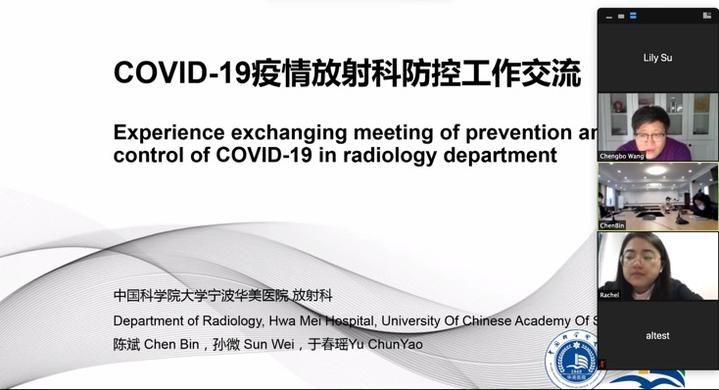Ningbo shares anti-virus experience with US via video conferenc

Hwa Mei Hospital affiliated with the University of Chinese Academy of Sciences, a designated hospital for treating COVID-19 patients in Ningbo, recently shares its anti-virus experiences with the University of Missouri School of Medicine in the US via remote video conference. [Photo/ zj.zjol.com.cn]
Hwa Mei Hospital affiliated with the University of the Chinese Academy of Sciences, a designated hospital for treating COVID-19 patients in Ningbo, recently shared its anti-virus experiences with the University of Missouri School of Medicine in the US via a remote video conference.
The US now leads the world in COVID-19 cases as the pandemic rages across the globe. The country had reported more than 200,000 COVID-19 infections as of April 2, according to statistics from Johns Hopkins University.
The video conference was chaired by Doctor Wang Chengbo from the University of Nottingham Ningbo, who contacted Hwa Mei University after receiving an e-mail from Professor Talissa Altes, director of the department of radiology at the University of Missouri School of Medicine in which she expressed eagerness to exchange experiences fighting the epidemic with her counterparts in China.
During the video conference, medics from Hwa Mei Hospital, including Professor Jin Yinhua and Doctor Chen Bin, shared their experiences diagnosing infections and managing the hospital.
All COVID-19 patients from Hwa Mei Hospital have recovered and been discharged from Hwa Mei Hospital, accounting for two thirds of the total in the city.
Missouri is located in the central United States and is still in the early stages of the epidemic, according to Altes.
She expressed gratitude to medics from Hwa Mei for sharing their experiences, saying their suggestions and specific methods will be very useful for them in carrying out medical treatment.
Wang pointed out that CT has played a very important role in the fight against the epidemic, as it can quickly and easily see lung structures, especially the development of effusion, adding that they are actively exploring the development course of the disease and assessing postoperative damage.



 Print
Print Mail
Mail
